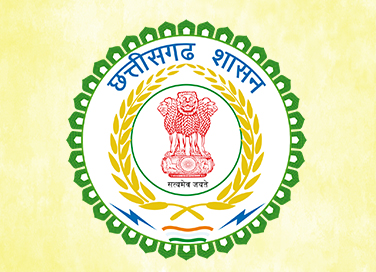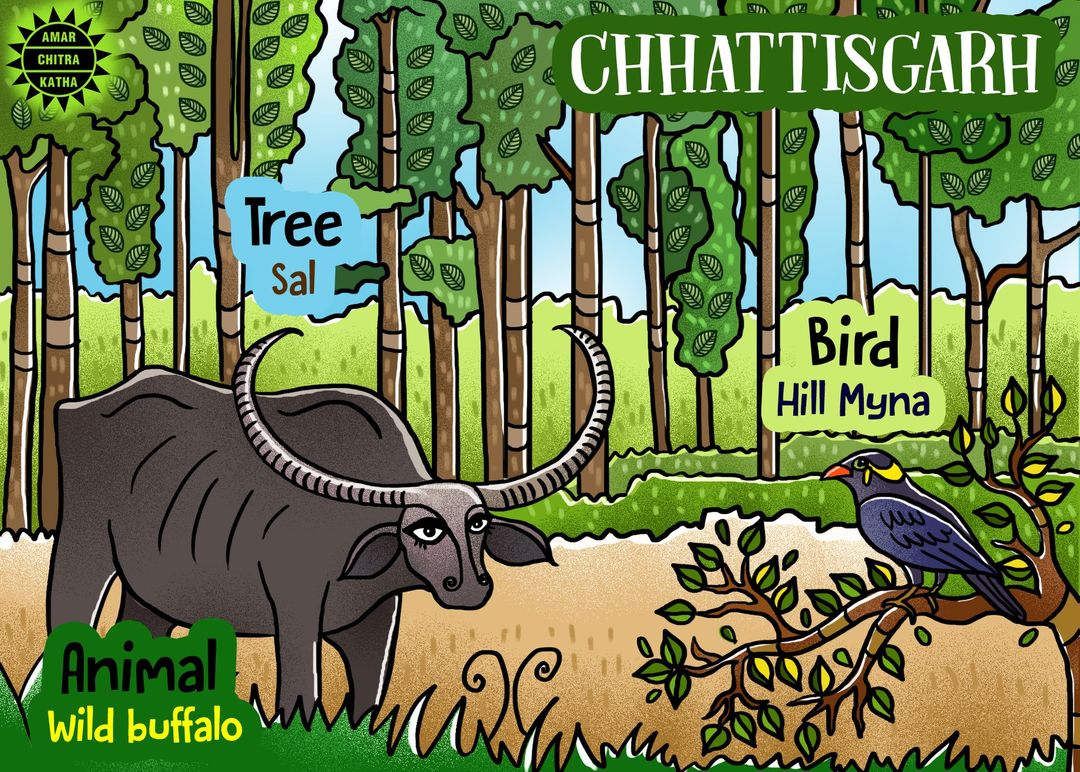The Story of Chhattisgarh
- August 12, 2022


The Story of Chhattisgarh
- August 12, 2022
By Srinidhi Murthy
Chhattisgarh is one of the Indian states situated in the central part of the nation, with Raipur as its capital. The state is surrounded by Odisha to the east, Telangana to the south, Maharashtra and Madhya Pradesh to the west, and Jharkhand and Uttar Pradesh to the northeast and north. Read more to know some interesting facts about Chhattisgarh.
To receive more such stories in your Inbox & WhatsApp, Please share your Email and Mobile number.
The region’s history can be traced back to the 3rd century. The Sitabega caves, situated on the Ramgarh hill in present-day Chhattisgarh, date back to the Mauryan period during the 3rd century. They still serve as one of the earliest examples of Indian architecture. Earlier, Chhattisgarh was known as Dakshina (Southern) Kosala. The region’s mention is found in the Indian epic, Ramayana. Kosala region was mentioned as the birthplace of Rama’s mother, Koushalya in Ramayana and Rama, along with his wife Sita and brother Lakshamana, had started their exile in the Dandakaranya region of Bastar in Chhattisgarh. Between the 6th and 12th centuries, the region was ruled by various dynasties such as the Sharabhpuria, Kalachuri, Somavanshi and Nagavanshi. The Bastar region of present-day Chhattisgarh was invaded by Chola emperors, Rajendra Chola I and Kulothunga Chola I, in the 11th century. In the 14th Century, the region came under the rule of the Haihaiyavanshi dynasty. During the 18th century, the kingdom began to decline due to the Maratha invasion.
In 1758, the region was conquered by Marathas and Bimbaji Bhonsle was appointed as its ruler. There was some unrest in the region during the Maratha rule and it faced attacks from Pindaris, irregular military plunderers, in the early 19th century. In 1818, Chhattisgarh came under British rule. Under British rule, the region comprised 14 feudatory princely kingdoms. In 1854, Nagpur was included under the rule of the British government, and Chhattisgarh was made into a deputy commissionership, with its headquarters located at Raipur.

Chhattisgarh has produced its fair share of heroes who sacrificed their lives for our nation’s freedom and fought bravely against British rule. Veer Narayan Singh, a landlord from Chattisgarh, headed the 1857 war of Indian independence in the region and was hanged at Jaistambh Chowk of Raipur. In the 1980s, the martyrdom of Veer Narayan Singh was resurrected and he became a symbol of Chhattisgarhi pride. In 1859, the Koi rebellion was an important uprising among the tribal people in the region of Bastar against the oppressive British rule. In the early 20th century, prominent leaders such as Pt. Ravishankar Shukla, E. Raghvendra Rao, Sundarlal Sharma, Thakur Pyarelal Singh, Shri Madhavrao and Shri Medhawale led movements such as the Individual Satyagraha, Non-Cooperation Movement, Quit India and also encouraged the people to participate in the Indian independence movement.
After independence, the region was merged with Madhya Pradesh according to the States Reorganisation Act, 1956, and remained a part of it for 44 years, until 1 November, 2000. Although the demand for the separate statehood of Chhattisgarh began in the 1970s, its roots go back to the early 20th century, when local leaders began to claim a distinct cultural identity for the region. In August 2000, the Indian legislature passed the Madhya Pradesh Reorganisation Bill to form the state of Chhattisgarh. The formation of Chhattisgarh was a noteworthy incident as it was done peacefully. Currently, Chhattisgarh is a resource-rich Indian state as it provides electricity, steel and coal to the rest of the nation. In 2021, the state had been ranked the cleanest state in the country for the third consecutive year, with Raipur being ranked the sixth cleanest city in the nation. It is the 9th largest Indian state and the 17th most populated state in the nation. The state also has many tourist destinations to explore, including Chitrakot Waterfalls in Bastar District, Barnawapara Wildlife Sanctuary in Mahasamund district as well as Mahakoshal Art Gallery, Purani Basti (Old Colony) and Mahant Ghasidas Memorial Museum in Raipur.
The state has produced artists, authors, musicians and scientists, who have provided their valuable contribution to the welfare of the society. Some of the notable personalities from Chhattisgarh in India are Naik Kaushal Yadav, Punaram Nishad, Pukhraj Bafna, and Teejan Bai. Naik Kaushal Yadav was a squad commander, who was martyred in the 1999 Kargil War between India and Pakistan. He was awarded Vir Chakra, the nation’s third highest gallantry award posthumously for his valour and sacrifice. Punaram Nishad is a folk musician, known for his prowess in Pandavani, a folk music tradition of Chhattisgarh. The musician was awarded Padma Shri, India’s fourth highest civilian award in 2005 for his contribution to Indian music. Pukhraj Bafna, an Indian paediatrician, received the Padma Shri in 2011, for his contributions towards tribal child and adolescent health. Teejan Bai, a folk artist, is known for enacting tales from the Mahabharata, with musical accompaniments, in Pandavani. She was honoured with the Padma Shri in 1987, Padma Bhushan in 2003, and Padma Vibhushan in 2019 by the Indian Government for her contribution to the arts. She was also the recipient of the Fukuoka Arts and Culture Prize, one of the greatest honours bestowed upon artists in Japan.
To receive more such stories in your Inbox & WhatsApp, Please share your Email and Mobile number.

Comic of The Month
The Naval Journey of India Book I
This book is the first of a three-book series that takes a deep and detailed look at India's Naval History and a deep insight into the lives of our men and women in white. But any series on the Indian Navy has to start at the very beginning - exploring India's celebrated maritime history. Join our little hero, Bharat, and his grandfather, Commodore Sagar, as they sail into the deep blue waters of time. Book I of The Naval Journey of India takes a sweeping look at India's maritime endeavours, how the seas impacted us over millennia and how the oceans made us who we are.